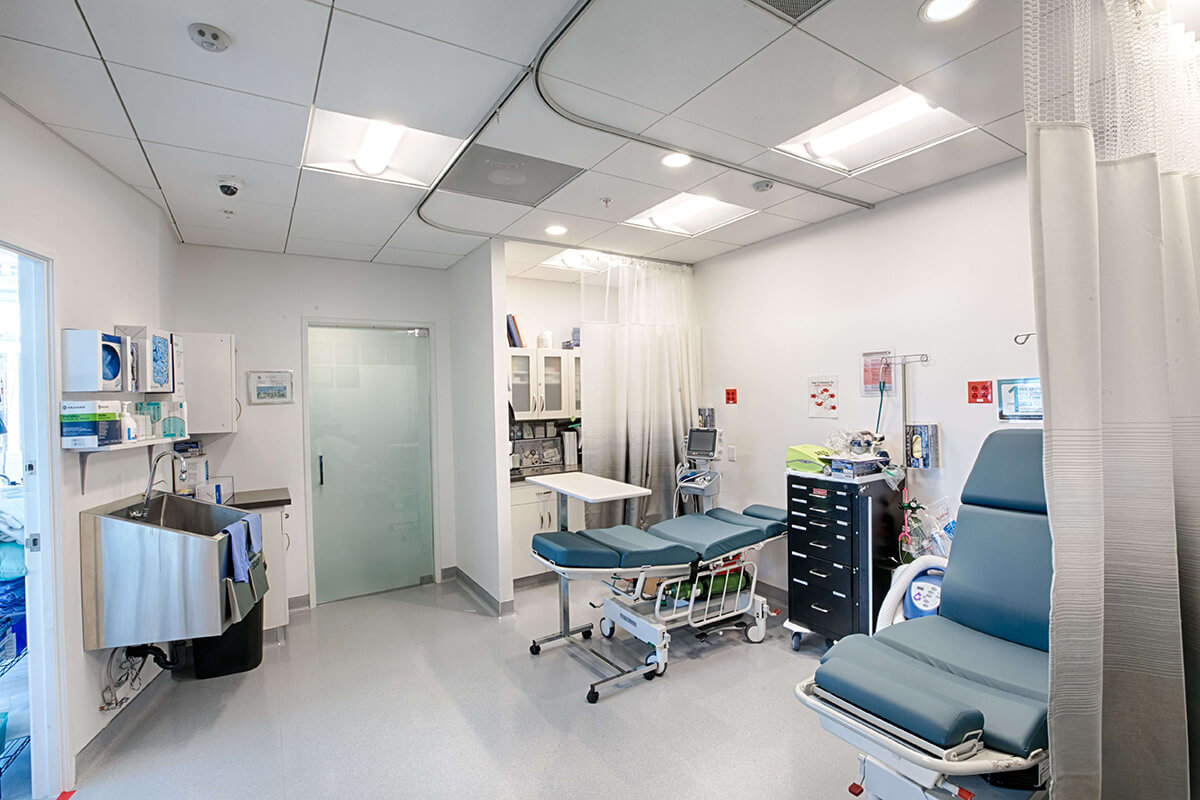Patient experience is more important with each day that goes by. That is the new reality and you just have to adjust or wait and see how the competition steals your patients.
But what does it have to do with exam room design? How important is exam room design for your medical office?
Intentional design of healthcare spaces is one way of making changes happen and obtain better results.
But the role of design in a healthcare setting is often overlooked. The opportunities to strategically rethink healthcare spaces are limitless because design can dramatically improve the experiences of everyone involved, such as doctors, staff, patients.
Exam rooms are becoming the center of the healthcare experience. That one sentence says it all when it comes to the importance of exam room design. But don’t go away, just yet. There is more.
Technological advances, point-of-care testing, and improved organizational flow models are streamlining the patient experience. And all that is part of exam room design.
Patients spend the majority of their visit inside the exam room instead of being in the reception or waiting area, or the lab.
That just adds up to the importance of exam room design. Old exam rooms need to be redesigned in order to foster a better doctor-patient relationship and to accommodate the ever-changing needs of technology. Modern exam rooms are more patient-centric, doctors and the rest of their team can significantly enhance effectiveness, efficiency, comfort, safety, and quality of care thanks to healthcare interior design.
Medical exam room design can be tricky.
The exam room can help win or lose patient trust. It’s the space where understanding between doctors and patients is being built from the very beginning. Yet exam rooms are designed for an old model of healthcare. And that’s why exam room redesign is necessary.
Why exam rooms need redesign?
Rethinking the exam room in your medical office is taking a renewed look at doctor-patient interaction and, the delivery of efficient patient care. The design of the exam room, as well as furniture and equipment decisions, has an undeniable impact on workflows.
Most exam rooms feel like intimidating environments. They lack spaces for patients to comfortably undress or place their belongings, which can immediately create uneasiness and lead to a lack of quality in care and average or bad patient experience.
Exam tables put patients at a different level than the physician, which makes sharing information awkward and impersonal.
Making small chances in exam room design can shift the role of your patients from passive to active and will help foster better doctor-patient relationship.
Another problem with old-fashioned exam rooms is that they are designed only for the patient and physician. There is very little or no room at all for family members.
Benefits of exam room design
- Efficiency
- Safety
- Flexibility
- Accessibility
How big should a medical exam room be?
The optimal size for an exam room is enough space to comfortably accommodate a physician, a nurse or assistant, your patient and at least one family member.
Factors of an effective exam room design
- Patient Satisfaction
- Ergonomics
- Equipment
- Exam room configuration
Exam room design for multiple activities
Redesigned exam rooms for multiple activities create better patient experiences.
Modern multi-purpose exam room creates a relaxing environment that supports learning.
You have to take into consideration:
- Accessibility is one of the most import considerations for an examination room.
- A moveable monitor best allows information to be clearly viewed by patients
- Provide adequate space and seating for family members if they need to participate in the conversation
- Surface that moves easily when you perform the physical exam
- A whiteboard can help capture questions or next steps
- Include ways to easily arrange and use their equipment and tools
- Support video conferencing with specialists or family members who can’t be physically present
- Flexibility for clinicians to easily arrange and use their equipment and tools
- Hands free hand washing
- Place for personal belongings
- A sliding patient door
- Choose storage that minimizes visual clutter while keeping frequently used items in easy reach
- Select surfaces and furnishings that can be quickly and easily cleaned between patients
- Flexible demountable walls and modular furniture to support evolving technology
- Include storage for patients’ clothing and personal items
- Mobile seating for the care team so they can fluidly move closer to patients and family
- Information displayed on a large monitor, providing equal visibility to educational information or data from a clinician’s device, such as lab or x-ray results
- A mobile worksurface with drawer storage and magnetic accessories to keep exam tools and technology.
The healthcare industry continues to evolve. Now is the time to think innovation when it comes to exam room design. You can always reach out if you need help. We would be more than honored to assist you and make your ideas a reality.




